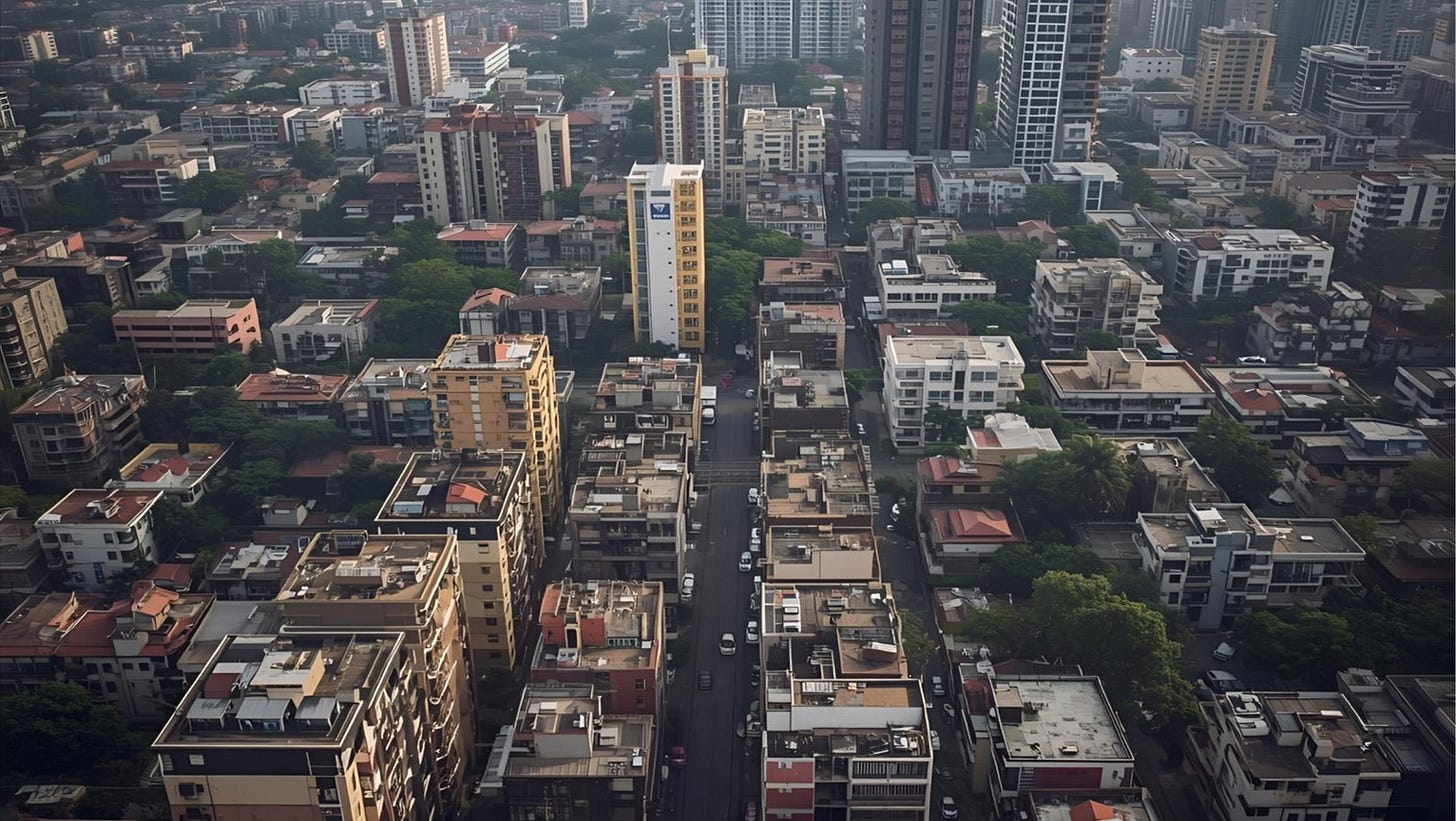How Transparency Reset Mumbai’s Housing Market
A simple reform shifted Mumbai’s housing from blind pricing to risk-based pricing, narrowing inequality in the process
View as PDF
Vaidehi Tandel: University of Manchester
Sahil Gandhi: University of Manchester
Anupam Nanda: University of Manchester
Nandini Agnihotri: The World Resource Institute
SDG 11: Sustainable Cities and Communities | SDG 17: Peace, Justice and Strong Institutions
Institutions: Ministry of Housing and Urban Affairs | Real Estate Regulatory Authorities
In India, where urban property absorbs much of a family’s lifetime savings, the rules have long tilted against ordinary buyers. Titles are messy, approvals opaque, and disputes common. In May 2017, 31 percent of new projects were caught in litigation in Mumbai, threatening long delays or even demolition. For most buyers, especially those entering under-construction projects, reliable information about such risks was simply out of reach.
Only the wealthy could afford to commission lawyers or private investigators. Everyone else bought in the dark, hoping their investment would not get embroiled in a court battle. This imbalance fostered what economists call a “market for lemons” – a situation where buyers cannot tell the good from the bad, leading risky projects to be overpriced relative to the sound ones. The result was an inefficient and unfair market.
A 2017 reform in Maharashtra shows how a simple shift – forcing developers to disclose litigation and approvals publicly – could correct these distortions, align prices with risk, and narrow inequality.
RERA: A Turning Point for India’s Housing
The Real Estate (Regulation and Development) Act of 2016 promised to change the balance. It required developers to register projects above certain thresholds – more than eight apartments or 500 square metres of land – with the state regulator. Maharashtra was among the first states to implement it, in May 2017.
Registration meant publicly disclosing key details online: approvals, estimated completion dates, amenities, and, crucially, whether the project faced litigation. Developers also had to display their registration number in advertisements.
This shifted the burden of proof. Instead of buyer beware, it became seller beware. Developers who failed to disclose accurately faced penalties. Within months, more than 14,000 projects were registered in Maharashtra – covering over 70 percent of ongoing developments at the time. One-fifth were in Mumbai, and about a third of those carried ongoing litigation. For the first time, this information was free, public, and easy to access.
Litigation as a Market Signal
Litigation in India’s property market is rarely cosmetic. They can stall completion for years, strand buyers in half-built towers, or even trigger demolitions. With India’s courts clogged by millions of pending cases, resolution is slow and uncertain. For families investing their life savings, litigation status is a crucial signal of risk.
Mandatory disclosure reduced these risks – by lowering both the monetary cost of hiring lawyers and the time cost of chasing information. Once buyers could see which projects were under litigation, markets had to reprice risk.
How Transparency Changed Pricing
Before disclosure, transactions clustered in what economists call a “pooling equilibrium” – everything was priced as if it were average, because no one could tell risky from safe. Good projects suffered, bad projects thrived, and buyers bore the cost. Public disclosure shifted the market toward a “separating equilibrium.” Buyers could distinguish lemons from solid projects, and prices adjusted accordingly. In plain terms: units in litigated projects started selling at a discount, while clean projects retained their value.
Analysis of 11,553 housing transactions across 972 projects in Mumbai between 2015 and 2020 makes this shift visible. Prices in litigated projects fell by 5-6 percent relative to comparable non-litigated units. For an average 900-square-foot apartment, that discount translates into roughly ₹400,000 – a significant saving for middle-class households.
The evidence is robust. The price effect holds even after accounting for neighbourhood trends, project characteristics, and unit attributes. Matching litigated and non-litigated projects of similar size and luxury level produces the same pattern. Tests show that before the reform, litigated and non-litigated projects followed similar price trends, strengthening the case that the reform itself caused the divergence.
Who Benefited Most
The benefits were not evenly spread but were progressive in nature. The steepest discounts appeared among lower-income buyers. For these families, public disclosure substituted for private due diligence that had previously been out of reach. Wealthier buyers, who had long commissioned legal checks, saw little change in the prices they paid.
The severity of litigation also mattered. About 9 percent of projects were tied up in “severe” cases – filed in the High Court or Supreme Court. In non-luxury developments, such projects experienced pronounced price declines once disclosure came in. Luxury projects, by contrast, showed little reaction: high-income buyers were already aware of legal risks through private channels, and even severe cases did not significantly alter valuations.
In Maharashtra, the reform levelled the playing field by narrowing the information gap. It brought efficiency, by aligning prices with real risk, and fairness, by protecting households least able to absorb losses. Its impact was most visible in the middle and affordable segments – where housing is both a policy priority and a social necessity.
Reform That Fits India
What made this reform work was not just the idea of disclosure but the way it was designed. It played to India’s institutional strengths while avoiding its weaknesses.
Enforcement-heavy approaches tend to flounder where regulators are stretched thin and courts are slow. RERA chose instead to empower buyers with reliable information. Transparency worked where enforcement could not. Compliance was kept simple: the information required was basic and digitised, reducing the burden on developers. Penalties for misreporting ensured credibility without overwhelming the regulator.
Most importantly, the reform ensured that transparency did not remain a privilege of the wealthy. By making information available to all buyers, it offered particular protection to those with the least capacity to safeguard themselves.
Lessons and Limits
Transparency, however, is no cure-all. It cannot resolve the deeper structural issues of India’s housing market – messy land records, slow courts, or weak urban planning. Nor does it eliminate the risk of developers misreporting. But it shows that even in constrained settings, smart design can deliver meaningful protection to consumers.
For policymakers across emerging economies, this is a reminder that reforms must be tailored to context. Importing regulatory blueprints from high-capacity states rarely works. Designing around your own institutional realities – by emphasising transparency, simplicity, and accessibility – may yield more progress at lower cost.
Rethinking What Matters
Grand housing schemes capture headlines, but they rarely touch the everyday vulnerabilities of ordinary buyers. Maharashtra’s reform did, precisely because it was modest and targeted. By changing the terms of a single transaction, it reshaped how families with limited resources could enter the market - a reminder that small reforms can have profoundly human consequences.
View as PDF
Authors:

The discussion in this article is based on the authors’ published research in the Journal of Public Economics (Volume 247). Views are personal.


